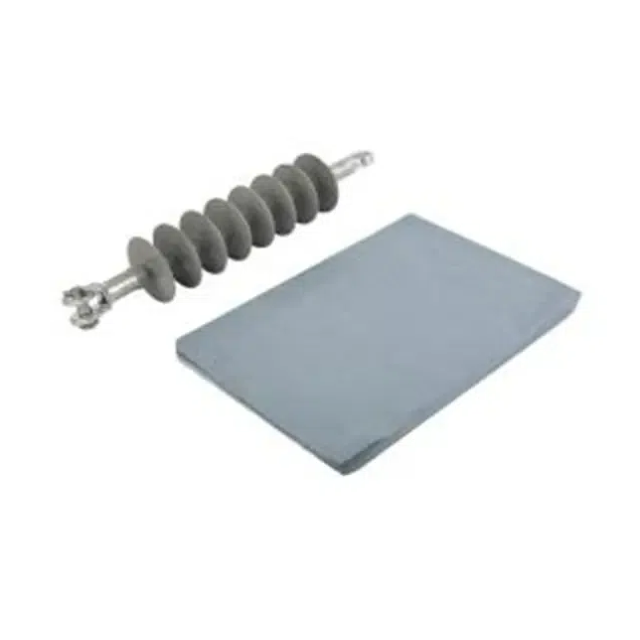Views: 0 Author: Site Editor Publish Time: 2025-07-11 Origin: Site











Modern electrical systems demand robust, long-lasting protection against voltage surges. At the heart of this protection lies the lightning arrester, a crucial component used to divert excess voltage from lightning strikes or switching surges safely to the ground. But the performance of these devices doesn't solely depend on internal mechanisms—external insulation plays a decisive role in ensuring their long-term reliability and safety. That's where insulating silicone rubber comes in.
As a material that excels in both electrical insulation and environmental resistance, insulated silicone is rapidly becoming the preferred solution for arrester manufacturers around the world. At Hefeng Silicone, we specialize in producing high-quality insulating silicone rubber specifically engineered for outdoor electrical applications like lightning arresters. Our advanced materials help ensure arresters perform optimally in the harshest conditions, significantly extending their operational lifespan.
The primary job of a lightning arrester is to protect electrical equipment by absorbing and redirecting sudden surges of electricity. These surges, which can originate from lightning strikes or faults in the transmission system, can reach extremely high voltages in an instant. To perform this role reliably, arresters must be:
During a surge event, the arrester must conduct extremely high voltages safely to the ground without allowing the surge to pass into the protected equipment. This requires excellent dielectric strength in the external insulation to prevent flashover.
Environmental exposure—rain, snow, salt fog, industrial pollution—can degrade many insulating materials. In such conditions, weak insulation leads to surface leakage currents and eventual electrical breakdown.
After diverting a surge, the arrester must quickly recover its insulating properties to remain protective against future events. This recovery needs to be automatic and effective regardless of pollution or moisture levels.
This level of protection can't be achieved with outdated materials. Traditional porcelain insulators, though mechanically strong, suffer from brittleness and susceptibility to pollution. Insulating silicone rubber, on the other hand, offers a modern solution with superior all-around performance.

When comparing insulation materials for surge arresters, silicone rubber consistently outperforms due to its wide-ranging capabilities in electrical, mechanical, and environmental conditions.
Silicone rubber has a high dielectric strength, typically ranging from 20 to 30 kV/mm. This makes it exceptionally capable of resisting electrical breakdown, even when exposed to high-voltage discharges or prolonged stress. For lightning arresters, this means fewer failures and a longer operating life.
Outdoor power infrastructure is constantly exposed to sun, wind, and pollutants. Silicone rubber is uniquely resistant to ultraviolet light and ozone, preventing the surface cracking, chalking, and embrittlement that plague many plastics and ceramics. This ensures stability over the long term.
Silicone's excellent thermal resistance (operating range from -60°C to +250°C) allows it to remain flexible and intact in both freezing winters and blazing hot summers. This adaptability makes it suitable for global deployment across diverse environmental conditions.
Advanced insulating silicone rubber formulations, like those from Hefeng Silicone, can also be made flame-retardant, halogen-free, and compliant with global safety standards. These characteristics are increasingly important in infrastructure planning.
Together, these properties make insulated silicone a logical and superior material choice for arrester housings and shed designs.
Aside from durability, insulating performance in challenging environments is the key differentiator of silicone rubber in lightning arresters. Here's how it contributes to long-term operational success:
Silicone rubber naturally exhibits hydrophobic surface properties, meaning water tends to bead and roll off its surface rather than forming a continuous conductive film. Even after contamination or surface aging, the hydrophobicity often self-recovers due to low-molecular-weight siloxane migration to the surface. This ensures stable performance in humid, rainy, or foggy environments.
Tracking (the formation of conductive paths on insulation surfaces) and erosion (material wear due to electrical discharges) are two major causes of insulator failure. Insulating silicone rubber resists both, thanks to its inorganic backbone and crosslinked structure. This enhances its ability to perform in highly polluted or salty environments like coastal regions or industrial zones.
Unlike ceramic insulators, which can crack or shatter under impact or stress, silicone rubber is flexible and tear-resistant. Even when surface-damaged, it can often continue to function safely. This "forgiving" nature translates to fewer unplanned outages or replacements.
These characteristics are vital for energy providers striving for grid reliability and low maintenance costs—especially as energy systems become more decentralized and complex.
The adoption of insulated silicone in lightning arresters isn't just about improving performance—it's also about reducing total cost of ownership.
Silicone rubber insulators are significantly lighter than traditional porcelain or glass. This reduces installation effort and costs, especially in remote or hard-to-reach locations like mountain transmission lines or offshore wind farms.
Unlike porcelain, which is brittle and prone to shattering under mechanical stress, silicone rubber is impact-resistant and flexible. This lowers the chance of damage during shipping, handling, or maintenance operations.
In polluted areas, ceramic insulators require regular cleaning to prevent flashovers. In contrast, the hydrophobic surface of silicone rubber repels water and contaminants, reducing cleaning frequency and associated labor costs.
With resistance to weather, pollution, UV, and mechanical damage, silicone rubber ensures longer intervals between replacements. This extended lifecycle further reduces maintenance demands and improves return on investment.
For utility providers, governments, and infrastructure planners, these benefits make silicone rubber the clear choice for sustainable, long-term arrester solutions.
If you're looking to extend the operational life of your lightning arresters while minimizing maintenance and enhancing safety, insulating silicone rubber is the smart choice. Its unique combination of dielectric strength, hydrophobicity, mechanical resilience, and weather resistance makes it ideally suited for today's high-voltage applications.
At Hefeng Silicone, we offer advanced formulations of insulated silicone developed specifically for power insulation systems, including lightning arresters. With over a decade of experience, cutting-edge manufacturing, and strict quality control, we support customers across energy, industrial, and infrastructure sectors.
Contact us today to learn more about our specialized insulating silicone rubber products and how they can improve the performance and reliability of your surge protection systems. Let Hefeng Silicone be your trusted partner in high-performance silicone solutions.